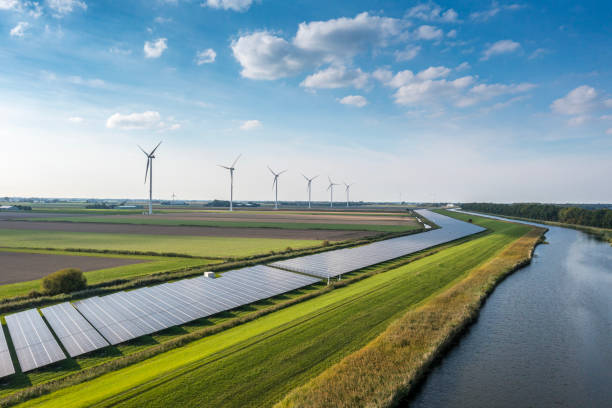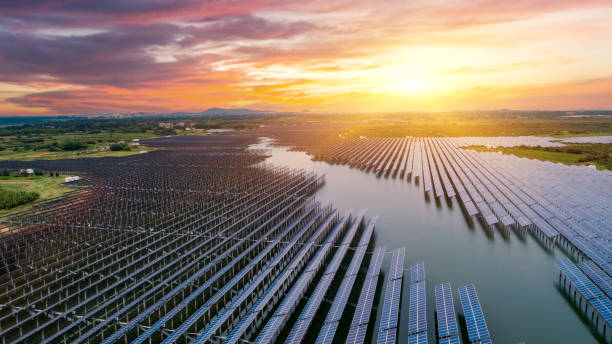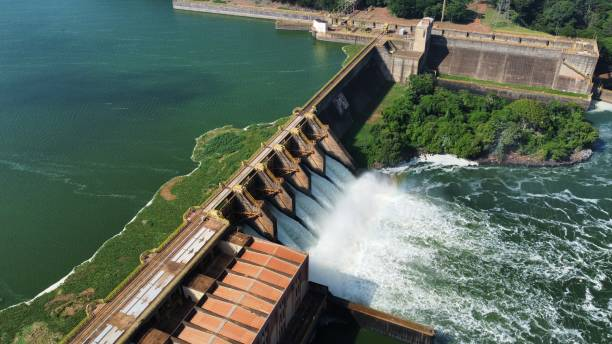Gas Supply to Geometric Power Resumes, as More People Now Receive Electricity
Harnesses Clean Energy From Raindrops, A Technology Breakthrough

Technology: Raindrops may seem harmless as they slide down windows or trickle through gutters. But inside each drop lies a powerful secret. When water flows through certain surfaces, it creates electrical charges. This is known as charge separation. It’s the same basic idea behind the static electricity you get when rubbing a balloon on your head. But instead of balloons and hair, this process happens at the edge where water touches a solid surface.

Until now, using this natural phenomenon to generate electricity seemed like a dead end. That’s because the electricity created only appears at the surface, and it’s trapped within an incredibly thin zone called the electric double layer.
This boundary exists only nanometers thick—far thinner than a human hair That’s the reason older methods like streaming current—where water is pushed through narrow channels—barely generate enough power to be useful. You lose more energy driving the water than you gain.

But now, a group of researchers led by Siowling Soh has flipped that story upside down. Researchers from the National University of Singapore and collaborators have made a surprising breakthrough. By letting water fall naturally—drop by drop—into a small vertical tube, they found a way to harvest clean electricity with high efficiency.
Their secret lies in something called plug flow. Unlike smooth, continuous water streams, plug flow forms when droplets collide inside a tube and create little slugs of water, each separated by pockets of air. These short water columns move down the tube one after another, like beads on a string.
The collisions and the structure of this flow pattern create a stronger charge separation than anything seen before. What’s even more impressive is that the system works without needing pumps or extra energy input. “Water that falls through a vertical tube generates a substantial amount of electricity by using a specific pattern of water flow: plug flow,” says Soh, the study’s lead author. “This plug flow pattern could allow rain energy to be harvested for generating clean and renewable electricity.”
From drops to LEDs
To test this, Soh and his team created a basic setup. They dropped rain-sized water droplets through a small metal needle and into a clear polymer tube just two millimeters wide and 32 centimeters tall—about the height of a foot-long ruler. As the droplets hit the top of the tube, they formed the plug flow and moved downward, generating charge.
At the bottom of the tube, the water was collected in a cup. Wires at the top and bottom captured the electricity. It didn’t just work—it worked incredibly well.

The team recorded more than 10% efficiency, a massive leap from older techniques that struggled to reach even 1%. And in terms of raw power, plug flow produced 100 watts per square meter—around 100,000 times more than earlier methods using continuous flow. That’s enough to light up 12 LEDs at once, using just the motion of falling water.
Plug flow in a tube generates electricity effectively. Illustrations of the (i) electric double layer and (ii) mechanism of streaming current. (CREDIT: ACS Central Science)
Even better, the power was continuous, not just brief spikes like with some other water-based generators. Researchers even doubled the output by running water through two tubes, and quadrupled it by using four. The system powered 12 LEDs for 20 seconds straight.
Why plug flow works
Past efforts to harvest electricity from water flows focused on narrow tubes, often at the micro or nanoscale. These sizes match the tiny Debye length—the distance over which electric charge is separated near a surface. For water with a pH of 5.6 (similar to rainwater), this Debye length is only 220 nanometers. When salt is added, it shrinks even more.
Because of this, streaming current systems—where water is pumped through small channels to generate electricity—don’t work well in real life. The energy required to move the water is more than what gets produced. These systems also can’t use natural water sources like rain or rivers, since they don’t flow easily through such tiny tubes.
Plug flow changes everything. It bypasses the limit set by the Debye length because it creates a new form of interfacial chemistry. Rather than relying on ions sitting in an electric double layer, plug flow separates hydrogen (H⁺) and hydroxide (OH⁻) ions completely throughout the water columns. That means electricity can be generated in larger, millimeter-scale channels where water can flow freely without pumps.
This isn’t just a lab trick. It’s a new way to think about energy.

Simpler than hydropower, smarter than static
Traditional hydropower relies on large water volumes and often harms local ecosystems. It needs dams, turbines, and lots of space. But plug flow electricity can be set up almost anywhere it rains. Think of rooftops, balconies, or roadside gutters.
Other methods tried to work around the inefficiency of streaming current. Some, like droplet-based electrostatic generators, needed pre-charged surfaces. These systems produced short bursts of electricity—lasting just milliseconds—and only achieved power densities between 0.1 and 1 watt per square meter. That’s far below plug flow’s 100 watts per square meter.
Also, those older systems didn’t harvest new charge. They just manipulated pre-existing static using water droplets. Plug flow, on the other hand, produces new charge directly from the motion of water—clean, renewable, and freely available.
Toward a rainy-day power source
This breakthrough opens up the chance to rethink how cities could power devices. A plug flow system doesn’t need special materials or complex machinery. It uses simple components like a tube, a metallic needle, and natural water. That makes it cheap and scalable. It could support low-power devices on rooftops, streetlights, or even outdoor sensors.
The work, published in ACS Central Science, shows that nature’s smallest actions—like droplets falling through a tube—can produce meaningful energy. Plug flow challenges the long-standing belief that electricity from charge separation can’t scale beyond lab experiments.
Soh and his team proved that millimeter-scale systems can do what no nanoscale one could: turn nature’s motion into sustainable power. It’s a hopeful step toward solving the global energy puzzle using nothing more than gravity, water, and the right kind of flow.
aol.com






